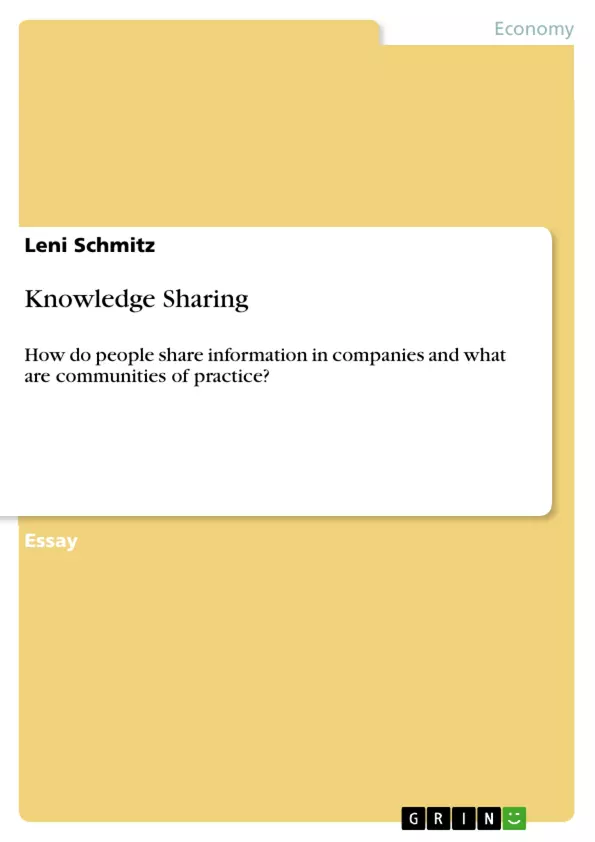This essay is about knowledge sharing and the key question is how do people
share information in companies and what communities of practice are. At first, it
shows how companies deal with the fact that today's economy runs on
knowledge. It presents two different strategies and what kind of strategy
companies like Ernst&Young or McKinsey uses. Beyond that, it describes the
way how a community of practice works and what kind of differences in contrast
to a team exist.
Inhaltsverzeichnis (Table of Contents)
- 1.0 Introduction
- 2.0 Characteristics of Knowledge Sharing
- 2.1 Different notions of knowledge
- 2.2 Knowledge sharing in companies
- 2.3 Collaboration management - brokering model
- 3.0 Strategies for managing knowledge
- 3.1 Codification strategy vs. Personalization strategy
- 3.2 Companies and their strategies
- 4.0 Community of practice
- 4.1 Community of practice - Definition & Use
- 4.2 Difference between community of practice and a project team
- 5.0 Conclusion
- 6.0 List of references
Zielsetzung und Themenschwerpunkte (Objectives and Key Themes)
This essay examines the complexities of knowledge sharing within companies, particularly focusing on how individuals share information and the role of communities of practice. The essay explores the strategies companies employ to manage knowledge in an increasingly information-driven economy, highlighting the importance of collaboration and information sharing. Here are some of the key themes:- Knowledge sharing strategies in companies
- The distinction between tacit and explicit knowledge
- The concept and function of communities of practice
- Comparing communities of practice to traditional project teams
- The impact of corporate culture on information sharing
Zusammenfassung der Kapitel (Chapter Summaries)
The introduction sets the stage by discussing the challenges of managing information overload in a corporate environment, emphasizing the need for efficient knowledge sharing strategies. It also introduces the concept of communities of practice as a unique form of collaboration.
The second chapter delves into the characteristics of knowledge sharing, focusing on the distinction between tacit and explicit knowledge. It explains how tacit knowledge, often difficult to articulate, is crucial for individual expertise, while explicit knowledge, easily communicated, can be shared more broadly. The chapter also emphasizes the importance of transforming tacit knowledge into explicit knowledge for effective organizational learning.
The third chapter examines two contrasting strategies for managing knowledge within companies: the codification strategy and the personalization strategy. The codification strategy emphasizes formalizing and documenting knowledge, while the personalization strategy focuses on fostering informal networks and relationships for knowledge sharing. The chapter also provides examples of how companies like McKinsey and Ernst & Young employ different strategies to manage their knowledge resources.
Schlüsselwörter (Keywords)
This essay centers around the key concepts of knowledge sharing, tacit knowledge, explicit knowledge, communities of practice, corporate culture, and knowledge management strategies. These concepts are explored in the context of organizational learning and information management in today's information-rich environment.- Citar trabajo
- Leni Schmitz (Autor), 2011, Knowledge Sharing, Múnich, GRIN Verlag, https://www.grin.com/document/179116



